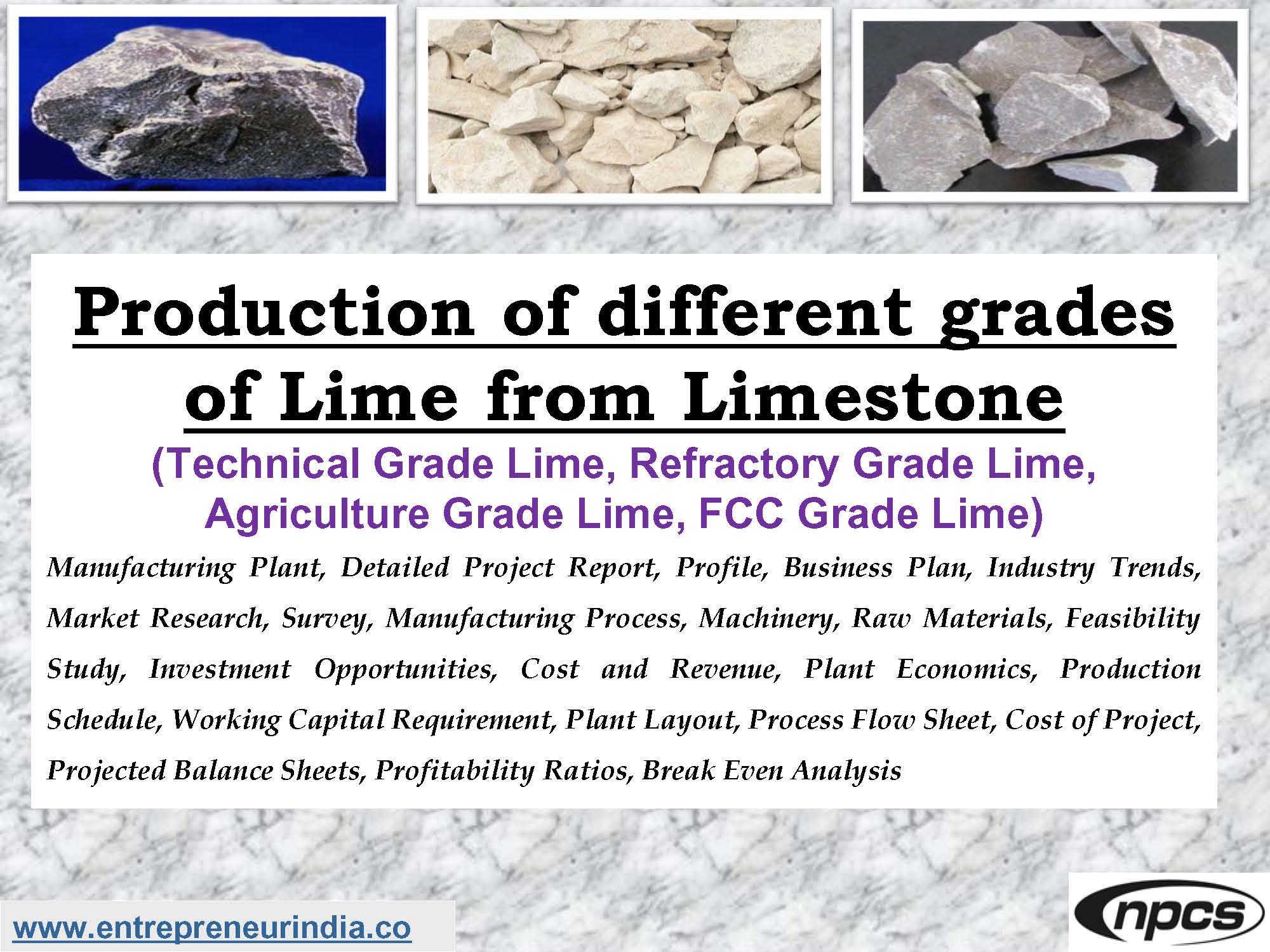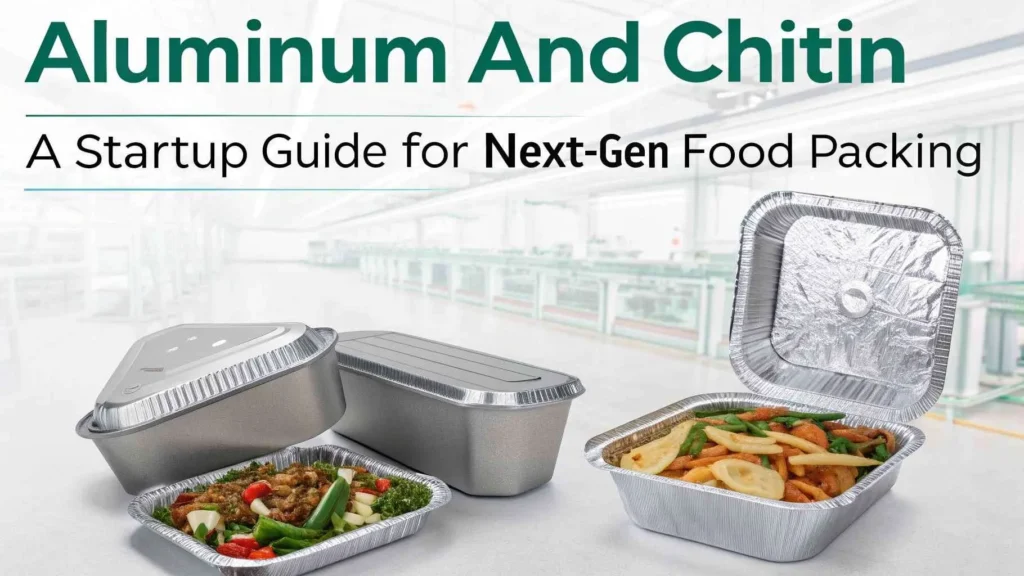
Lime plays a vital role in various industrial processes ranging from steel manufacturing and chemical production to water treatment and food-grade applications. With its increasing demand across construction, agriculture, pharmaceuticals, and F&B sectors, setting up a Lime Manufacturing Plant can be a highly rewarding venture. The plant’s flexibility to produce multiple grades—from technical lime to FCC (Food Chemicals Codex) grade—makes it a smart investment for entrepreneurs looking to serve both commodity and specialty markets. Moreover, with India’s growing industrialization and environmental focus, lime remains an essential raw material with consistent demand.
Lime Manufacturing Plant | Technical to FCC Grade Lime
Setting up a modern lime manufacturing plant requires knowledge of raw materials, process technology, quality standards, and regulatory compliance. Whether you’re producing hydrated lime for construction or high-purity FCC grade lime for pharmaceuticals and food, the production workflow must ensure both efficiency and consistency.
Read Also :Aluminum Cans Production
Market Demand and Industry Applications
Lime is classified into several grades based on its purity and use:
-
Technical Grade Lime: Used in steel plants, paper mills, and wastewater treatment
-
Agricultural Lime: Improves soil pH and fertility
-
Chemical Grade Lime: Essential in petrochemicals, bleaching, and glass manufacturing
-
FCC Grade Lime: Used in food preservation, sugar refining, and pharmaceutical preparations
Moreover, with government emphasis on clean water and food safety, the demand for FCC grade lime is rising steadily.
Raw Materials and Inputs
The basic raw material for any Lime Manufacturing Plant is limestone (CaCO?), available abundantly in states like Rajasthan, Madhya Pradesh, and Gujarat. Key inputs include:
-
High-purity limestone (with minimal silica, iron, and magnesium)
-
Fuel (coal, pet coke, or gas for kilns)
-
Water (for slaking and dust control)
-
Additives (optional, depending on product grade)
Moreover, quality limestone directly impacts the grade and reactivity of the final lime product.
Manufacturing Process Overview
The lime manufacturing process broadly includes:
-
Crushing and Screening
Raw limestone is crushed to 25–50 mm and screened for size consistency. -
Calcination in Kiln
Crushed limestone is fed into vertical shaft or rotary kilns. It is heated at 900–1100°C to remove CO?, resulting in quicklime (CaO). -
Cooling and Storage
The quicklime is cooled and stored in silos. Proper cooling ensures structural stability and handling safety. -
Hydration (Optional)
For hydrated lime (Ca(OH)?), water is added to quicklime under controlled conditions in a slaker. The result is a fine, white powder suitable for food, pharma, or chemical applications. -
Sieving and Milling
Depending on end use, lime may be further ground or classified into different particle sizes. -
Quality Testing
Each batch is tested for purity, reactivity, heavy metals, and microbial content (especially for FCC grade).
Moreover, using advanced kiln control systems improves thermal efficiency and product uniformity.
Machinery and Plant Layout
A standard Lime Manufacturing Plant requires the following equipment:
-
Jaw crushers and hammer mills
-
Rotary or vertical shaft kilns
-
Lime coolers
-
Hydrators or lime slakers
-
Pulverizers and classifiers
-
Dust collection systems
-
Automated bagging or bulk-loading units
A well-designed plant layout should include zones for raw material storage, processing, packaging, and waste handling. Moreover, proper ventilation and dust control are crucial for worker safety and environmental compliance.
Quality Grades: Technical to FCC Lime
Each grade of lime serves a distinct market:
-
Technical Grade Lime: Typically 85–90% CaO, used in metallurgy and construction.
-
Chemical Grade Lime: Requires 90–93% CaO with controlled impurities.
-
FCC Grade Lime: Minimum 95–98% CaO with strict limits on lead, arsenic, and heavy metals; conforms to Food Chemicals Codex standards.
Producing FCC grade lime involves additional purification, fine grinding, and microbial control during hydration and packaging. Moreover, all equipment in this line must meet food-grade standards (SS316 or equivalent contact parts).
Licensing and Regulatory Compliance
To operate a Lime Manufacturing Plant, the following licenses are typically required:
-
Factory License and MSME/Udyam Registration
-
GST and Trade License
-
Pollution Control NOC (air emissions, dust)
-
Weights & Measures certification (for packaging)
-
FSSAI License (for FCC grade production)
Moreover, BIS certification and ISO 9001/14001 help build trust with B2B buyers, especially for export or institutional clients.
DPR and Financial Planning
A Detailed Project Report (DPR) is essential for planning, loan application, and project execution. Your DPR should include:
-
Executive summary
-
Raw material availability study
-
Machinery and vendor details
-
Energy and fuel requirement analysis
-
Manufacturing flowchart
-
Product mix and grade selection
-
Cost estimation (CAPEX and OPEX)
-
ROI and break-even analysis
-
Risk factors and contingency planning
Moreover, including sustainability features (like fuel-efficient kilns or solar panels) can make your DPR eligible for green incentives.
Packaging and Distribution
Lime products are typically packed in:
-
HDPE or paper bags (25 kg, 50 kg)
-
Jumbo bags (1 MT) for industrial bulk buyers
-
Food-grade sealed pouches (for FCC lime)
Distribution channels may include:
-
Cement and steel manufacturers
-
Sugar mills and chemical plants
-
Fertilizer and pesticide companies
-
Pharmaceutical and food processing units
-
Government procurement departments
Moreover, building relationships with EPC contractors and turnkey solution providers opens bulk supply opportunities.
See Also :How to Start an LPG Cylinder Manufacturing Plant
Conclusion
A modern Lime Manufacturing Plant offers multi-grade flexibility, catering to a wide range of industrial and consumer needs. By investing in high-quality equipment, strict quality control, and regulatory compliance, entrepreneurs can build a strong brand in both domestic and global lime markets. Moreover, producing FCC grade lime adds premium value and opens doors to high-margin segments like pharmaceuticals and food processing. With proper planning, sustainability integration, and a detailed DPR, this plant setup can become a long-term, profitable industrial venture.




